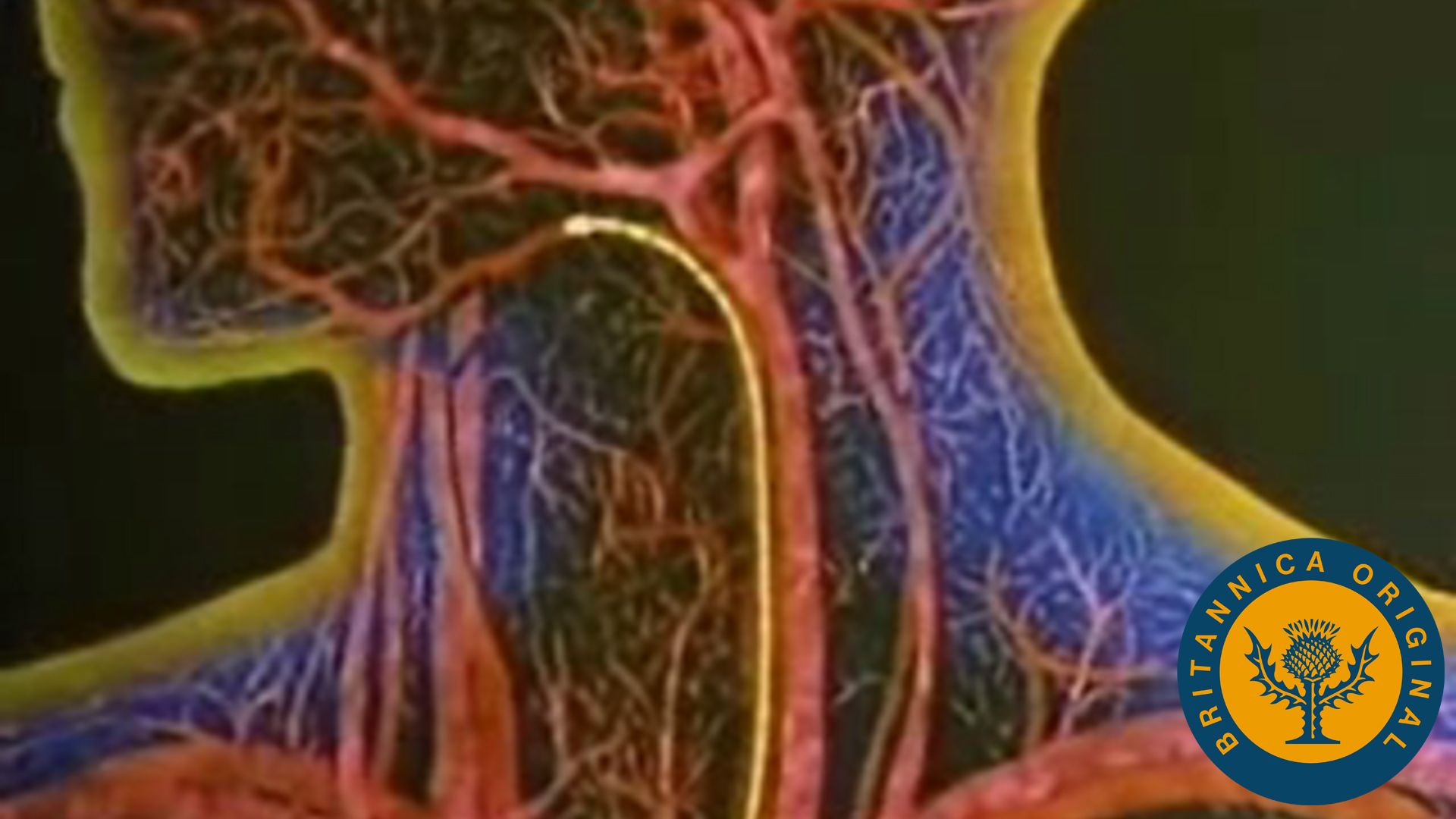How do red blood cells circulate oxygen throughout the human body?

How do red blood cells circulate oxygen throughout the human body?
Lungs need the help of red blood cells to circulate oxygen throughout your body.
Encyclopædia Britannica, Inc.
Transcript
NARRATOR: Let's imagine that this is the only red blood cell and that we're going to follow along as it travels through a typical circuit.
We'll start here, on the right side of the heart. Our journey begins with a heartbeat.
[Music in]
The first destination is a lung.
Here the pathway branches again and again, leading the blood through the smallest of the blood vessels--the capillaries. A web of capillaries surrounds each alveolus.
Inside an alveolus our oxygen molecule dissolves into the film of moisture and diffuses across the thin respiratory membrane, entering a capillary . . .
. . . just as the red blood cell sweeps past the same alveolus. Our oxygen molecule, as well as many others, latches onto the red blood cell, turning it a brighter red.
[Music out]
The oxygen rich cell then flows back to the left side of the heart, completing the first loop of its circuit. The heart drives the blood out again, this time to supply the oxygen needs of the rest of the body. The course it takes is determined almost completely by chance.
Once again the blood is directed into thin capillaries. Surrounding the capillaries, the living cells are all using up oxygen and building up concentrations of carbon dioxide.
[Music in]
When the red blood cell reaches cells which contain less oxygen than the blood, its cargo of O2 diffuses into the cells. At the same time waste carbon dioxide will diffuse into the bloodstream from concentrations outside and be picked up by the blood cell and the plasma.
[Music out]
It now flows back to the right side of the heart, completing the second loop of its circuit and returning to its starting position. From here it begins again . . .
. . . back to a lung, back into the capillaries surrounding an alveolus, where it releases its load of carbon dioxide and picks up a new load of oxygen.
We'll start here, on the right side of the heart. Our journey begins with a heartbeat.
[Music in]
The first destination is a lung.
Here the pathway branches again and again, leading the blood through the smallest of the blood vessels--the capillaries. A web of capillaries surrounds each alveolus.
Inside an alveolus our oxygen molecule dissolves into the film of moisture and diffuses across the thin respiratory membrane, entering a capillary . . .
. . . just as the red blood cell sweeps past the same alveolus. Our oxygen molecule, as well as many others, latches onto the red blood cell, turning it a brighter red.
[Music out]
The oxygen rich cell then flows back to the left side of the heart, completing the first loop of its circuit. The heart drives the blood out again, this time to supply the oxygen needs of the rest of the body. The course it takes is determined almost completely by chance.
Once again the blood is directed into thin capillaries. Surrounding the capillaries, the living cells are all using up oxygen and building up concentrations of carbon dioxide.
[Music in]
When the red blood cell reaches cells which contain less oxygen than the blood, its cargo of O2 diffuses into the cells. At the same time waste carbon dioxide will diffuse into the bloodstream from concentrations outside and be picked up by the blood cell and the plasma.
[Music out]
It now flows back to the right side of the heart, completing the second loop of its circuit and returning to its starting position. From here it begins again . . .
. . . back to a lung, back into the capillaries surrounding an alveolus, where it releases its load of carbon dioxide and picks up a new load of oxygen.







